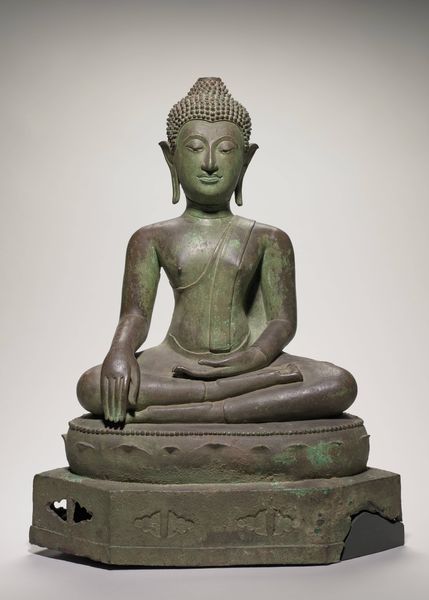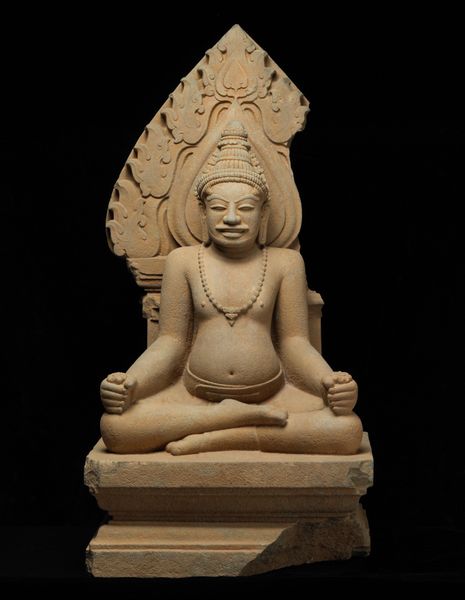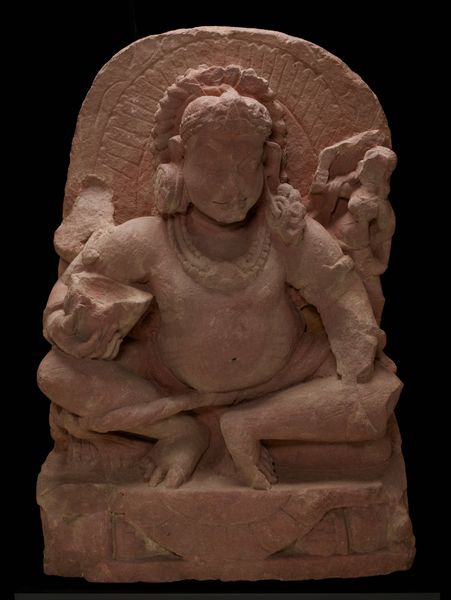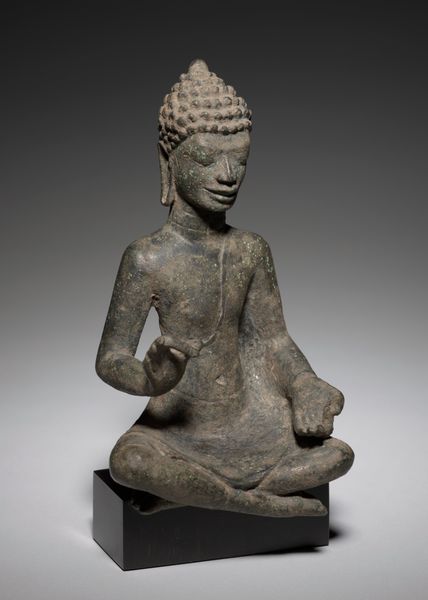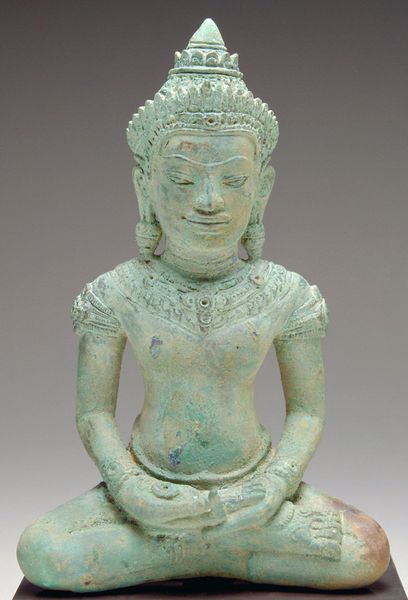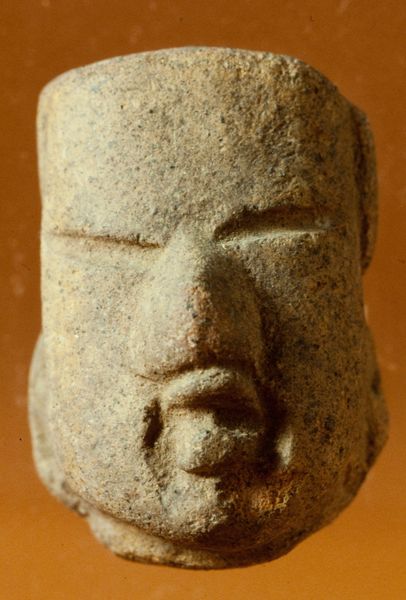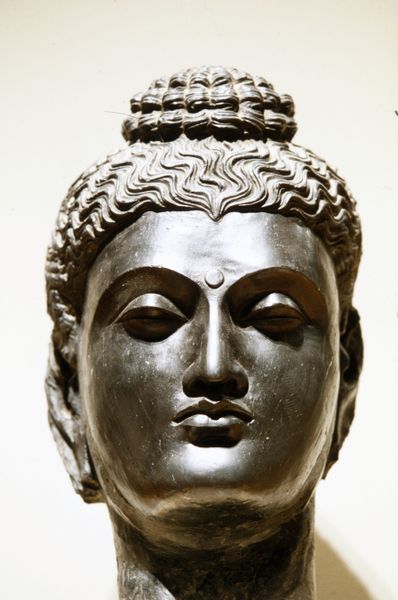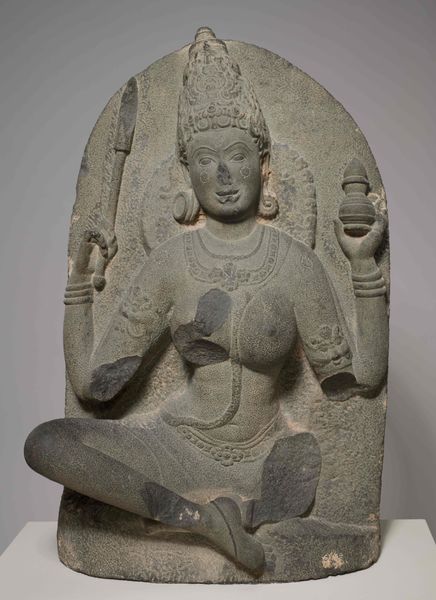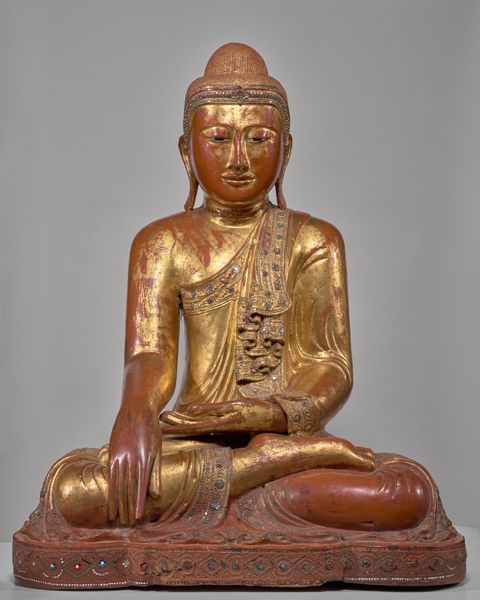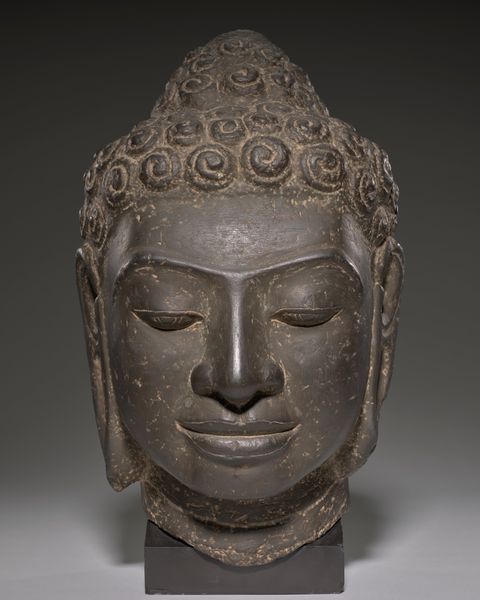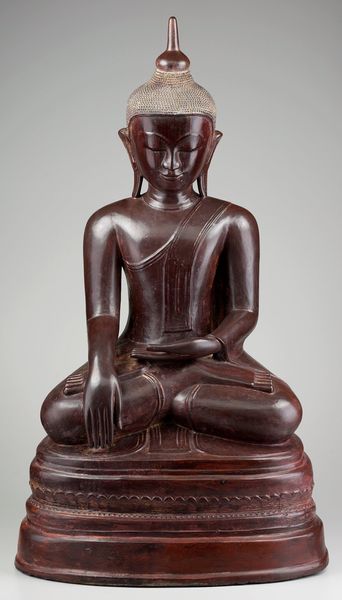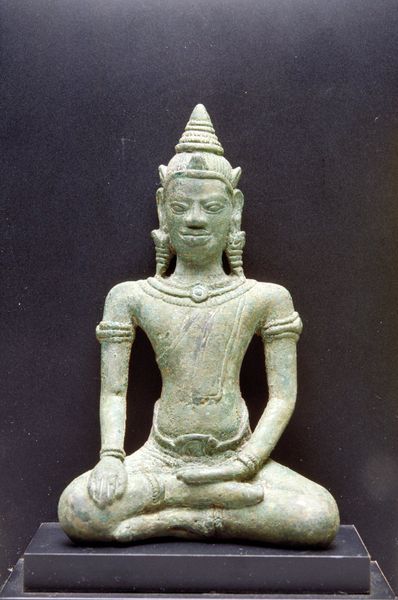
sculpture
#
medieval
#
stone
#
sculpture
#
asian-art
#
figuration
#
sculpting
#
sculpture
#
statue
Dimensions: 33 1/4 x 15 x 11in. (84.5 x 38.1 x 27.9cm)
Copyright: Public Domain
Editor: Take a look at this sculpture of "Naga-Enthroned Buddha," dating back to the 13th or 14th century. It's made of stone, and it just radiates serenity. What can you tell me about this piece, from your perspective? Curator: Well, viewed through a historical lens, this sculpture reveals quite a bit about the power dynamics within its culture. Representations of the Buddha, especially those with elaborate iconographies like this Naga, or serpent, reveal how religious and political authority often intertwined. Note the details -- where was it placed? How did it function within the community? It served not only as a focus of worship, but as a visible symbol of power and protection within a potentially unstable sociopolitical climate. Editor: So the Naga isn't just a decorative element, but something deeply meaningful? Curator: Precisely. The serpent Naga shelters and protects the Buddha. This is not mere visual narrative; it is also a declaration of legitimacy. Think of the patrons who commissioned this work—they would likely have wanted to broadcast not only piety, but also strength. Did specific dynasties associate themselves with Naga imagery? Understanding those links gives us clues to interpreting the statue's function in society. Editor: That makes so much sense. So, artworks from the past were really shaping opinions and sending clear messages. It is way more complex than just beautiful artistry. Curator: Absolutely. And understanding the historical context enhances our appreciation for the piece today. What new appreciation will it stimulate when its imagery and status change again?
Comments
No comments
Be the first to comment and join the conversation on the ultimate creative platform.
